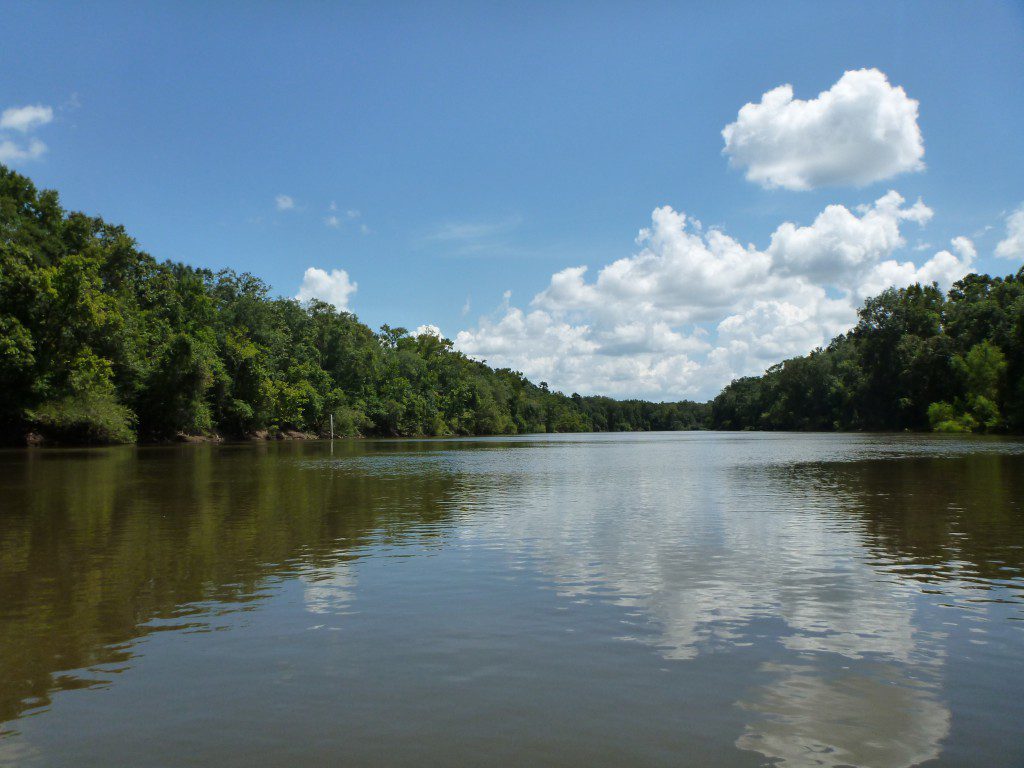Rob Diaz de Villegas WFSU-TV
Over the last month-and-a-half, Dr. Randall Hughes and Dr. David Kimbro have been introducing us to the ecosystems of the North Florida coast, with a focus on what each ecosystem does for people. With some services, like carbon sequestration or oyster’s filtration of water, it can be difficult to grasp how individual people are affected. The recent fishery crisis in Apalachicola more concretely shows what’s at stake when an ecosystem service fails. Join us this week as we paddle the length of the Apalachicola River, the source of fresh water for the Bay and a major determiner of the success or failure of the fishery.
The Rivertrek gathering shown in the video happened, possibly by coincidence, on National Oyster Day. Afterwards, Riverkeeper Chair Dan Tonsmiere took us on a boat tour of the Apalachicola River Delta and I interviewed him. You don’t see any of that in the video, as recent events called for our updating the interview. It was more convenient for him to come to our studio than to have us meet him in Apalachicola for that second interview. He has understandably been busy lately. “We’re in a non-stop crisis mode,” he said as I guided him downstairs to our studio.
 Mostly, people rely on the river to support the nursery habitats in Apalachicola Bay, and its world famous oyster reefs. That’s where a lot of the human pain of this drought is felt. Along the 105 miles* of the river, however, there’s an incredible diversity of life. I’ve never seen the bluffs of the northern river, the only place on earth where one can see a torreya tree. In my reading for this trip, I’ve read about frogs as big as dinner plates and alligator snapping turtles; endangered salamanders and freshwater mussels. One of this year’s paddlers, Doug Alderson, has done Rivertrek before and wrote about it in his book, “Wild Florida Waters.” He describes a night filled with the sounds of howling coyotes and barred owl calls. Because of our impact on this world, we kind of have to re-calibrate what the word “wild” means. But on this trip, there should be plenty of “wild.”
Mostly, people rely on the river to support the nursery habitats in Apalachicola Bay, and its world famous oyster reefs. That’s where a lot of the human pain of this drought is felt. Along the 105 miles* of the river, however, there’s an incredible diversity of life. I’ve never seen the bluffs of the northern river, the only place on earth where one can see a torreya tree. In my reading for this trip, I’ve read about frogs as big as dinner plates and alligator snapping turtles; endangered salamanders and freshwater mussels. One of this year’s paddlers, Doug Alderson, has done Rivertrek before and wrote about it in his book, “Wild Florida Waters.” He describes a night filled with the sounds of howling coyotes and barred owl calls. Because of our impact on this world, we kind of have to re-calibrate what the word “wild” means. But on this trip, there should be plenty of “wild.”
So here is what we’re going to try. We will post periodic photos and videos as we move down the river, as connectivity allows (fingers crossed). Coverage maps show a dead zone towards the south of the river, in the Apalachicola River Wildlife and Environmental Area (which we covered in this video). Fellow paddler Georgia Ackerman will chip in updates. Every day will end with a wrap-up post. That’s my goal.
I’m nervous and excited about this trip. I can’t wait to go out and experience the river and to share that experience with you.
For more information on Rivertrek, visit the official page. This page is on the Riverkeeper web site, and you can further explore what they do for the river. (They’re also on Facebook).
The Franklin County Promise Coalition is coordinating aide efforts for families that are being affected in Franklin County through their Bay Aid program. As Dan told us in his original interview, over half of the residents of Franklin County depend on the river for their livelihoods. Learn more about volunteering and other Bay Aid opportunities here.
